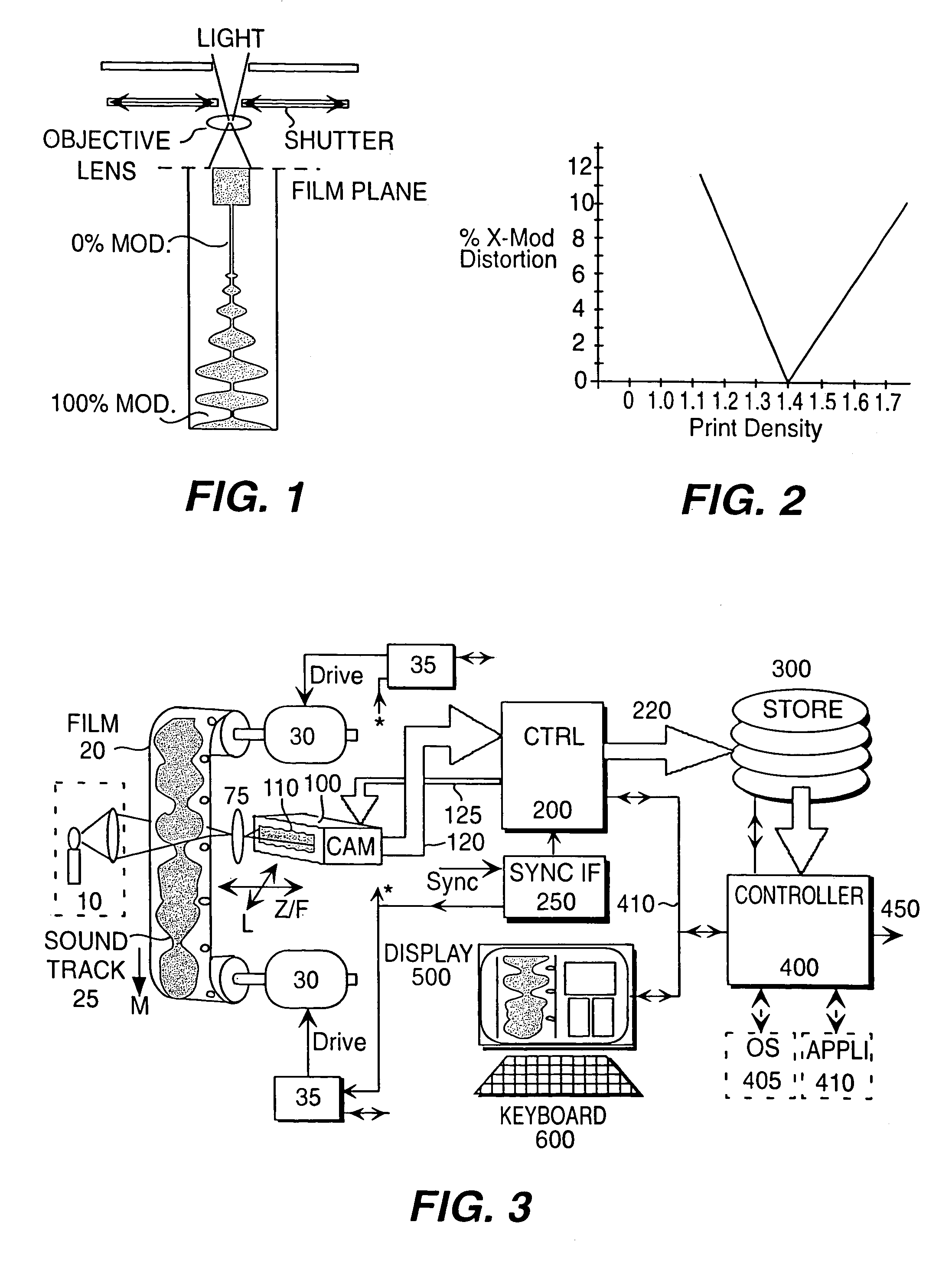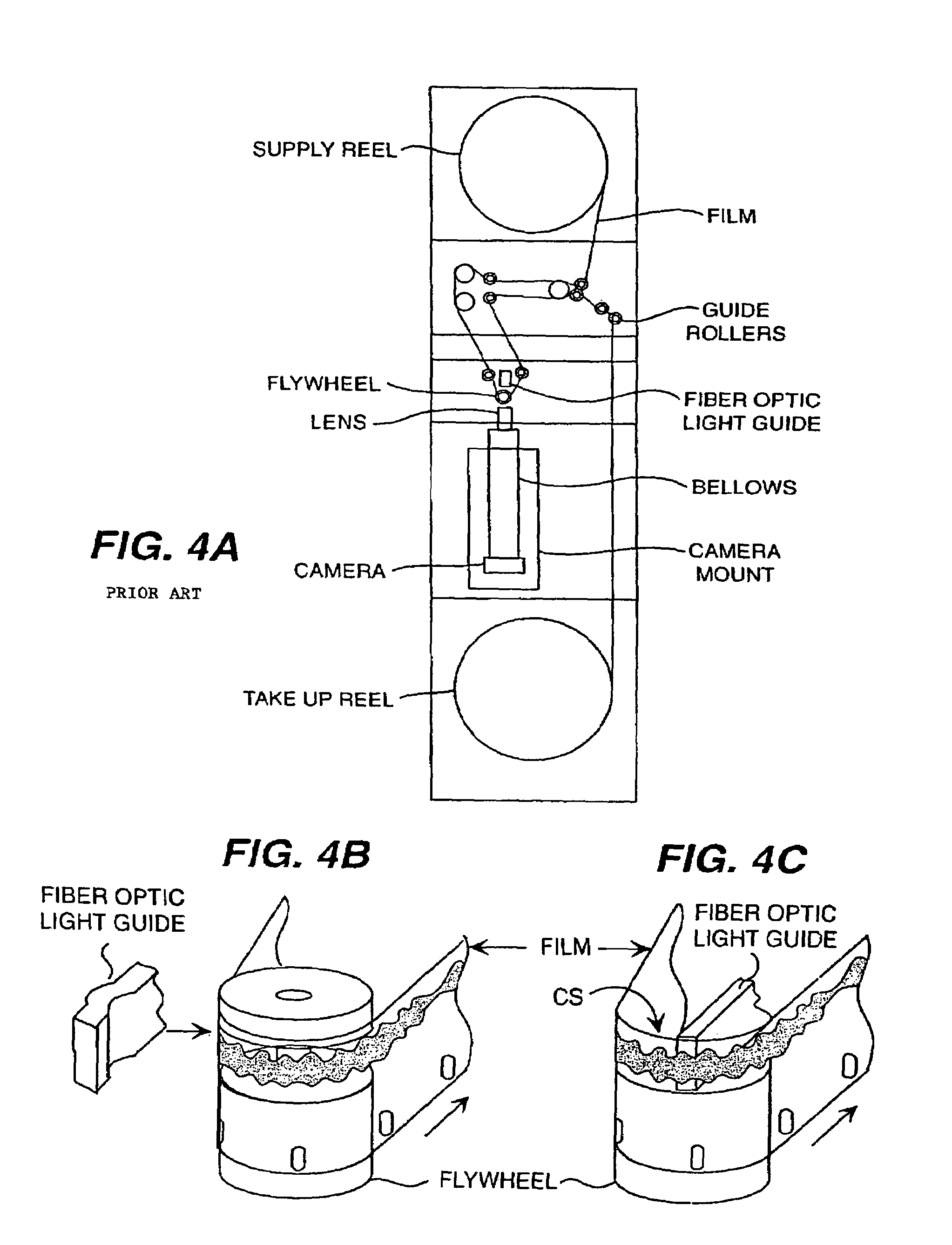Digital reproduction of optical film soundtracks
a digital reproduction and film soundtrack technology, applied in the field of digital reproduction of optical film soundtracks, can solve the problems of spurious fringing image, distortion of image spread, physical damage and contamination, etc., and achieve the effect of facilitating azimuth alignment of scanning means
- Summary
- Abstract
- Description
- Claims
- Application Information
AI Technical Summary
Benefits of technology
Problems solved by technology
Method used
Image
Examples
Embodiment Construction
[0031]The block diagram of FIG. 3 shows an inventive arrangement for reproducing and processing an optically recorded analog audio sound track. Typically a light source 10 is projected onto film 20 which includes an audio sound track 25, depicted in FIG. 3 with an exaggerated width dimension. The audio signal my be represented as suggested in track 25 by means of a variable area recording method, however the audio signal may also be represented by corresponding variations in density substantially across the width of the sound track area. In a conventional film sound reproducer light from source 10 is transmitted through film 20 and track 25 in accordance with the method employed for exposing the sound track. However, the resulting varying intensity light, modulated by the soundtrack, is gathered by a photo sensor such as a photo cell or solid state photo detector. The photo sensor usually generates a current or voltage in accordance with the intensity of the transmitted light. An an...
PUM
 Login to View More
Login to View More Abstract
Description
Claims
Application Information
 Login to View More
Login to View More - R&D
- Intellectual Property
- Life Sciences
- Materials
- Tech Scout
- Unparalleled Data Quality
- Higher Quality Content
- 60% Fewer Hallucinations
Browse by: Latest US Patents, China's latest patents, Technical Efficacy Thesaurus, Application Domain, Technology Topic, Popular Technical Reports.
© 2025 PatSnap. All rights reserved.Legal|Privacy policy|Modern Slavery Act Transparency Statement|Sitemap|About US| Contact US: help@patsnap.com



